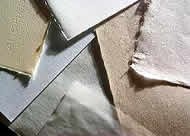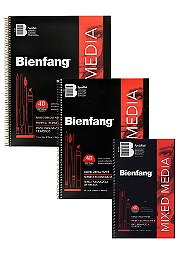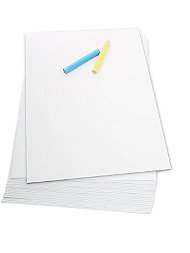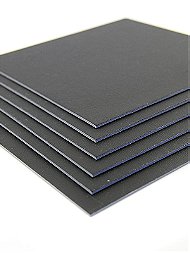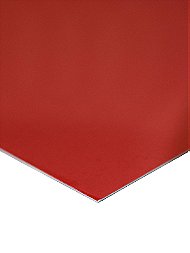Purchase Guide: Paper & Boards
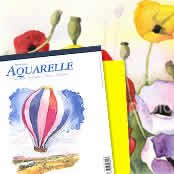 Paper
Paper
When most people hear the word paper, they probably first think of the standard 8 1/2 x 11 in. sheets of
smooth, white printer paper made from wood pulp, so commonly found in schools and offices throughout the world.
Paper, however, doesn't have to be smooth or white, and doesn't even have to be made from wood. In fact, paper
is any thin sheet of material composed primarily of compressed cellulose pulp, and that pulp can come from wood,
flax, cotton, or even onion or rice. Depending on the fibers used and the process of manufacture, a wide variety
of tones, colors, and textures are possible.
This means that there are literally thousands of different papers to choose from when seeking a support for a
particular project. While the vast selection may seem daunting at first, most papers are described by a few
general characteristics. An understanding of these characteristics will help you to choose the correct paper no
matter what the project. Luckily, MisterArt.com is here to help! Not only do we have the best paper prices
online, but we have fast shipping all over the U.S. This guide should help artists of all stripes find the
precise paper that they're looking for. When buying paper online, there are a few considerations to take into
account:
Grade—The quality of a sheet of paper is referred to as its "grade." Grade is based on
the material from which the paper is made. Lower grade papers-- like newsprint-- are inexpensive and suitable
for students and preliminary sketch work. Higher grade papers, such as those made of 100% cotton, are generally
excellent for permanent artwork.
Weight—The "weight" of a sheet of paper is actually a measurement of the weight of a
ream, or 500 sheets. Sheet size, for this measurement, is standardized according to paper type. Light weight is
70 lbs. or less, medium weight 90-100 lbs., and heavy weight 140 lbs. and over. It's now common to see the
weight as a measurement of grams per square meter. This is often a more accurate and useful measurement, as it
is not based on sheet size.
Paper with a lighter weight is most often used for sketching and preliminary work because it can bend or
wrinkle more easily than thicker papers. However, this tendency can also make it useful for projects or artworks
that require folding and shaping.
Heavy weight paper is more sturdy and durable than light weight, but also more expensive. The heaviest papers
can even be used for mounting purposes.
Texture—Paper texture can vary tremendously, from ultra smooth to extremely rough. The
rougher the paper, the more "tooth" it has. Hand-made papers are usually highly textured with rough, toothy
surfaces. Machine-made papers can be rough, hot pressed, or cold pressed.
- Rough paper is highly textured, with many grooves, hills, valleys, and indentations.
- Hot Pressed means the paper has been pressed with hot rollers during its manufacture. Hot pressed
paper has a smooth surface with little to no tooth. It's well suited for precise detail and illustration. And
because it is fine-grained, it's also good for even applications of color.
- Cold Pressed paper is made with cold rollers. It has a slightly textured surface that's perfect for
mediums such as watercolor and charcoal that require some tooth.
Whether you're an artist looking for the perfect support for painting or illustration, or a crafter in need of
something special for your latest project, MisterArt.com carries the paper for you! MisterArt.com offers
everyday discounts on our extensive selection of the following kinds of paper:
Bristol Paper is an economical heavyweight paper
that often comes in a choice of two surfaces. Smooth Bristol paper is ideal for fine pen and ink, pencil, and
mechanical drawing. Vellum Bristol paper has a slight tooth and is designed for a broad range of drawing and
painting, including crayon, pencil, charcoal, and watercolor or gouache.
Calligraphy Paper is designed with a smooth
surface ideal for an easy flow of ink from a calligraphy pen. Some calligraphy paper is meant for practice and
comes preprinted with a practice rule and a slanting grid.
Canvas Paper is an economical alternative to canvas
suitable for mounting—its rough surface texture effectively holds pigment and enhances the creative
process. Canvas paper is excellent for painting with oils and acrylics and good for mixed media.
Charcoal and Pastel Paper is paper developed
with the ideal texture to create stunning charcoal drawings or pastel paintings. Charcoal and pastel paper
requires a good, proper tooth for precise shading with charcoal, pastel, pencil, or crayon.
Construction Paper is a classroom
favorite! This heavier-stock paper comes in packs, pads, rolls, and sheets of assorted bright colors ideally
suited for arts and crafts. Construction paper is trusted by artists ready to cut, paste, doodle, and fold.
Craft Paper serves a variety of uses in the
creation of arts and crafts. Craft papers include:
- metallic paper, which adds
shine to festive decorations for holidays, weddings, and birthdays;
- origami paper, which is
delicate paper used for the ancient Japanese paper-folding art form that's also great for making place
settings and party favors;
- textured paper, which comes in
many different, course textures perfect for crafts such as screen printing, block printing, posters, and
display backgrounds;
- tissue paper, also known as
crepe paper, which can be folded and fluffed to any number of shapes great for wrapping, decorating, and other
arts and crafts; and
- transparent paper, which
adds color and light to the design of any crafting project.
- drawing and sketching paper features a
non-reflective surface receptive to pen and ink, pencil, crayon, charcoal, watercolors, and felt markers.
Drawing and sketching paper is available in pads, rolls, sheets, sketchbooks and
journals.
Graphite and Transfer Paper allows you to
transfer your design from a sketch, pattern, template, or free-hand drawing to any surface. It allows for clean,
crisp tracings that can be erased and painted over.
International and Exotic Paper includes
fine-quality paper of widely varying grades, colors, textures, and uses from around the globe.
Printer and Copier Paper is smooth and
sized properly to accept ink and graphics from copy machines, laser printers, and inkjet printers.
Stationary Paper is rugged, colorful paper
that can be cut, glued, folded, and printed to create outstanding cards, letterhead, envelopes, and invitations.
Tracing and Graph Paper are kinds of paper
that are most often used by designers and commercial artists, for whom precision and transferability is a
necessity. Tracing and graph paper come in several different forms intended for a variety of uses:
- Acetate is general purpose film
perfect for many commercial art applications. Acetate film is an art industry standard for overlays, color
separations and layouts.
- Drafting paper, naturally,
is designed for drafting work, and its surface is superb for pencil drafting, ink work, and typewriters.
- Graph paper typically features
non-reproducible blue grid lines that simply the process of creating precise drawings for graphic design,
interior and architectural designing, and plan and profile views.
- Tracing paper is most often
transparent or translucent to aid in tracing and reproducing other works.
Watercolor Paper is notable for its rough tooth
and heavyweight thickness, enabling it to stay strong while wet. Watercolor paper comes in many different sizes
and qualities; some watercolor paper is priced affordably for students while others are carefully crafted for
masters.
Wrapping Paper includes many brightly
colored, disposable papers (from contact paper to tissue paper to crepe paper) that are ideal for adding pizzazz
and sparkle to a variety of projects, from scrapbooking and picture framing to floral arranging and decorating.
No matter what kind of paper your project requires, MisterArt.com guarantees
the lowest price on the Internet. If we don't already offer the lowest price online, we'll gladly match it!
Boards
For some projects, paper just isn't tough enough! For these more rugged forms of artistic expression, many
artists call upon boards instead. There is very little in the art world as versatile as a board. Boards can be
painted and drawn on, cut, carved, decorated, hung with art or photographs, used to build, used to frame, and
used in just about any other way you can imagine.
Artists have long used boards as support and backing for artwork. In fact, only stone has as long a history as
an artistic support. Natural boards made of cedar, poplar, beech, walnut, mahogany, and oak have been desired by
artists for centuries because of their rigidity, durability, and portability. Today, a number of man-made boards
have also been developed to maximize these advantages:
Canvas Boards—Combining the texture of canvas
with the rigidity of board, canvas boards are lightweight and low-cost. They consist of artist canvas stretched
over heavy board backing. The canvas has usually been sized and primed. Depending on the canvas and primers
used, canvas boards are great for painting with oils, acrylics, and watercolors.
Clay Boards—These panels, often constructed of
masonite, have been coated with a pH-neutral clay that's both uniform and durable. Most clay boards are smooth
and will work with a variety of media, from pencils to oil paints. Clay boards with a textured surface are also
available. The texture makes them great for use with such media as watercolors and pastels that require some
tooth.
Cork Boards and Rolls—Not only do cork
boards and rolls provide insulation and acoustical soundproofing while adding warmth and character to walls and
ceilings, they're great for hanging in your home or office to post memos, photographs, drawings, clippings, and
more with the help of a few thumbtacks!
Corrugated Boards—These cardboard or
polypropylene boards are sturdy and tough, making them ideal for outdoor signs, presentation boards, rugged
models, and other tough, weatherproof uses.
Display Boards— Display boards are versatile
art materials that can be used to mount, frame, accentuate, and protect artwork. Typically, display boards are
rigid and sturdy enough to stand on their own and reinforce flimsier paper artwork.
There are four common types of display boards that serve an array of different purposes:
- Foam boards are constructed of two
sheets of poster board bonded together by a thin polystyrene core. Easily scored, lighter than wood, and
sturdier than regular poster board, foam boards make ideal presentation boards for science projects and art
collages. Acid-free foam board can also be used as mounting board and cut to create unique mats for paintings
and photographs.
- Mat boards are thin, sturdy paper
boards that are most often used to create mats for the purpose of framing artwork. Some mat boards come in
unique textures or can be modified with tools to look rough, sleek, or antique. Other mat boards feature color
patterns or can be painted. Still other boards have inner foam cores of various colors other than the standard
white. A unique mat can enhance artwork dramatically, but can also overwhelm it.
- Mounting boards are similar to
foam boards and are most often used in framing. Artwork created on paper is affixed to the sturdier mounting
board, held flat by a mat, and placed inside a frame. Mounting boards are typically of higher quality than
foam boards. Because they may remain in contact with artwork inside a frame for a long time, mounting boards
are designed to be acid-free and undamaging to artwork.
- Poster boards are the lightest and
least-rigid display boards. Poster boards are great for making signs, posters, collages, and other decorative
works of art. Although very practical and affordable, poster board is not as durable as other kinds of display
boards.
MisterArt.com has a great selection of low-cost display
boards in many different sizes and colors!
Illustration Boards—The pressed surfaces
of these boards make them perfect for illustration and line work. Cold pressed boards possess textured surfaces
that are perfect for pastels, charcoal, and crayon. They also work well with watercolors. Hot pressed boards are
non-porous and smooth, allowing for sharper detail. They work best with marker and pen and ink techniques.
Pastel Boards—Designed primarily for use with
pastels, these boards have a sandy coating that holds dry media like no other surface. The fine grain tooth also
works well with water media.
Scratch Boards—These boards are coated with a
fine white clay and then covered with an opaque black ink. Using a scratch knife or other metal tool, the ink
can be scraped off without damaging the clay underneath. By scratching through the ink, unique black and white
drawings can be created. Some scratch boards come already coated in ink and are ready for scratching. Others
require inking before they can be scratched.
Boards are also great for mounting artwork and photographs. Mounting boards are designed
specifically for this purpose. They are solidly constructed and possess striking black or white surfaces that
showcase the work. Poster boards, corrugated boards, and foam boards provide a cheaper alternative
for mounting. Available in a variety of materials and colors, these boards are a quick and inexpensive choice
for making signs and displaying artwork. They also make a great material for craft projects, as they're
generally easy to cut, shape, and fold.
For actually framing artwork, mat boards
are the way to go. Mat boards add contrast and depth to mounted and framed materials. The best mat boards are
acid and lignin free so they won't alter or deteriorate artwork over time. We've got low prices on mat boards
online every day at MisterArt.com!






